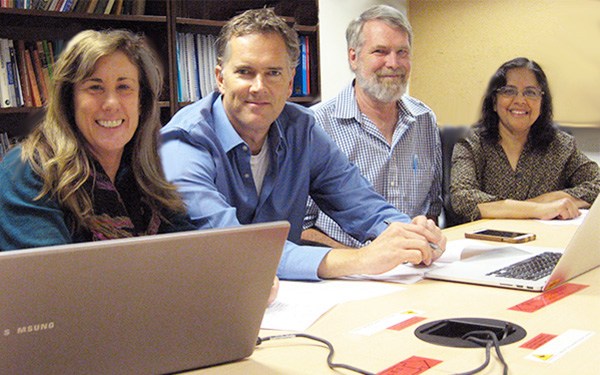 SDSU has been awarded $286,060.00 over 5 years as part of a $2.6 million National Science Foundation grant to fund the project Collaborative Research: A National Consortium for Synergistic Undergraduate Mathematics via Multi-institutional Interdisciplinary Teaching Partnerships (SUMMIT-P) led by Dr. Susan Ganter at Virginia Polytechnic Institute and State University. Eleven colleges and universities, including SDSU, will form a consortium to renew the lower division undergraduate mathematics curriculum based on research about the needs of partner disciplines. The project studies the role of interdisciplinary and inter-institutional faculty learning communities in building collaborations for meaningful curricular change. At each institution, mathematics and partner discipline faculty will collaborate to understand recommendations from the (prior) Curriculum Foundations (CF) project, determine how these recommendations can be used to effectively improve the content of affected courses, introduce modifications in pilot sections, work with a central evaluation team to measure the effectiveness of new approaches especially as pertains to students from underrepresented groups, offer workshops and support for instructors using these new curricula (locally, regionally, and nationally), and scale-up these new offerings within the consortium and through dissemination to additional campuses.
SDSU has been awarded $286,060.00 over 5 years as part of a $2.6 million National Science Foundation grant to fund the project Collaborative Research: A National Consortium for Synergistic Undergraduate Mathematics via Multi-institutional Interdisciplinary Teaching Partnerships (SUMMIT-P) led by Dr. Susan Ganter at Virginia Polytechnic Institute and State University. Eleven colleges and universities, including SDSU, will form a consortium to renew the lower division undergraduate mathematics curriculum based on research about the needs of partner disciplines. The project studies the role of interdisciplinary and inter-institutional faculty learning communities in building collaborations for meaningful curricular change. At each institution, mathematics and partner discipline faculty will collaborate to understand recommendations from the (prior) Curriculum Foundations (CF) project, determine how these recommendations can be used to effectively improve the content of affected courses, introduce modifications in pilot sections, work with a central evaluation team to measure the effectiveness of new approaches especially as pertains to students from underrepresented groups, offer workshops and support for instructors using these new curricula (locally, regionally, and nationally), and scale-up these new offerings within the consortium and through dissemination to additional campuses.
______________________________ ______________________________ ______________